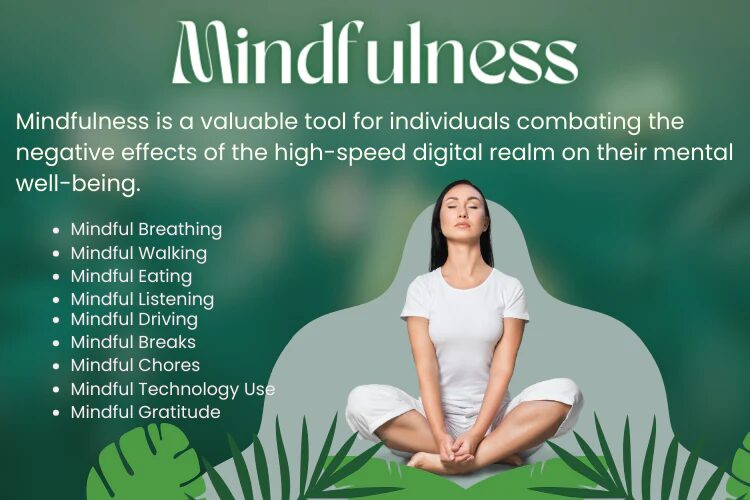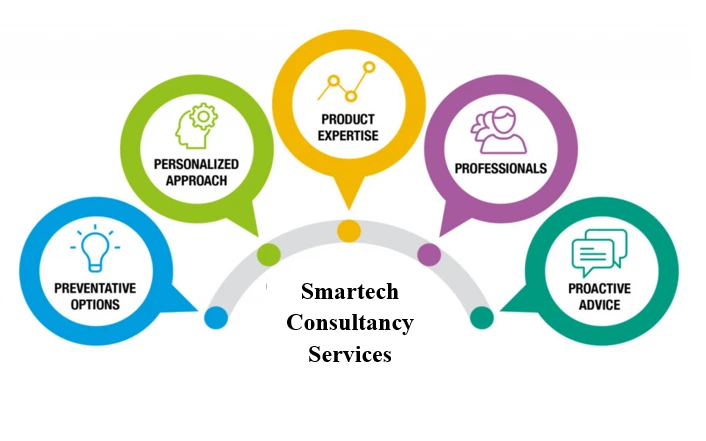Imagine this: you’re curled up with a good book, a steaming cup of tea by your side. Suddenly, a notification buzzes on your phone, shattering the tranquility. Sound familiar? In our hyper-connected world, staying present and focused can feel like a constant battle against the digital tide. But fear not, fellow traveler on the path to mindfulness! This guide equips you with practical strategies to cultivate a calmer, more mindful existence amidst the digital deluge.

Think of your mind as a cluttered attic. Constant notifications, social media feeds, and the never-ending news cycle are like dusty boxes overflowing with information. Mindfulness, in this analogy, is the act of decluttering that attic, creating space for focus, peace, and clarity. So, how do we achieve this digital decluttering and embrace mindful living?
Understanding the Need for Mindfulness: Why It Matters in the Digital Age
Our brains are wired for connection, and digital technologies exploit this to keep us glued to screens. This constant stimulation can lead to information overload, anxiety, and difficulty focusing. Mindfulness acts as a counterbalance, promoting:
- Increased Focus: By training your attention to be present in the moment, you can improve your ability to focus on tasks and avoid getting distracted by digital pings and notifications.
- Reduced Stress: The constant barrage of information bombarding us can be a major stressor. Mindfulness practices like meditation can help us manage stress and cultivate inner peace.
- Enhanced Self-Awareness: Mindfulness encourages us to observe our thoughts and feelings without judgment. This self-awareness allows us to make conscious choices about our digital habits.
Taming the Tech Titans: Strategies for Mindful Digital Habits
We don’t have to become digital hermits to achieve mindfulness. It’s about creating a healthy relationship with technology. Here are some strategies:
- Declutter Your Digital Space: Just like a cluttered physical space can be overwhelming, so too can a cluttered digital space. Unsubscribe from unnecessary emails, delete unused apps, and organize your files.
- Embrace Digital Detox: Schedule regular breaks from technology – an hour a day, a weekend getaway, or even a digital-free vacation. Rediscover the simple joys of the offline world.
- Be Intentional with Your Tech Use: Ask yourself, “Do I need to check my phone right now?” Before picking up your phone, consider if there’s a more mindful way to spend that time.
Cultivating Mindfulness in Everyday Moments: The Art of Being Present
Mindfulness isn’t just about technology – it’s about cultivating a present-moment awareness throughout your day. Here are some practices to incorporate:
- Mindful Breathing: This simple practice involves focusing on your breath, allowing your mind to settle and become present. Take a few deep breaths whenever you feel overwhelmed or stressed.
- Mindful Eating: Slow down and savor your food! Put away your phone and focus on the taste, texture, and aroma of your meal. This mindful approach fosters a healthier relationship with food.
- Mindful Walking: Transform your daily walk from a time to zone out into a mindful experience. Notice the sights, sounds, and smells around you. Feel the ground beneath your feet and the rhythm of your breath.
The Power of Nature: Reconnecting with the World Beyond the Screen
Nature is a powerful antidote to the digital world’s constant stimulation. Here’s how to harness its mindful potential:
- Spend Time Outdoors: Immerse yourself in nature, whether it’s a walk in the park, a hike in the woods, or simply sitting in your backyard. Nature has a calming effect and promotes feelings of well-being.
- Embrace the Power of Silence: In our noisy world, silence can be a rare gift. Seek out quiet moments throughout your day, even if it’s just for a few minutes. Listen to the sounds around you and appreciate the stillness.

The Mindful Journey: It’s Not About Perfection, It’s About Progress
Remember, mindfulness is a journey, not a destination. There will be days when you get sucked into the digital vortex – that’s okay! The key is to develop a kind and non-judgmental awareness of your digital habits. Celebrate your progress, no matter how small, and gently nudge yourself back to mindful living when needed.
Conclusion: Finding Your Balance in a Digital World
By incorporating these practices, you can create a more mindful relationship with technology. Remember, you are not at the mercy of your notifications; you have the power to choose how technology fits into your life. Mindful living allows you to reclaim control of your attention, reduce stress, and cultivate a sense of peace and clarity amidst the digital chaos. Embrace the journey, embrace the present moment, and rediscover the joy of simply being.
Frequently Asked Questions (FAQs)
1. I find meditation boring. Are there other ways to practice mindfulness?
Absolutely! Mindfulness can be integrated into any activity. Washing the dishes, gardening, or even folding laundry can become mindful experiences when you focus on the present moment and your senses.
2. How can I deal with the pressure to be constantly connected?
Open communication is key. Let your friends and family know you’re taking steps to be more mindful and might not be reachable all the time. True connections will understand and respect your boundaries.
3. What if I get anxious when I disconnect from technology?
It’s normal to feel a sense of withdrawal initially. Start with small breaks and gradually increase the duration of your digital detoxes. Remind yourself of the benefits of being present and the sense of calm that awaits you on the other side of the digital detox.
4. I’m worried about missing out on important information if I’m not constantly checking my phone. What can I do?
Schedule specific times to check your phone for updates – perhaps once in the morning and once in the evening. This allows you to stay informed without getting sucked into the endless scroll. You can also designate a trusted friend or family member to contact you in case of emergencies.
5. Is there anything wrong with multitasking?
While multitasking might seem efficient, it can actually hinder your focus and productivity. Mindfulness encourages you to tackle tasks one at a time, giving each your full attention. You’ll likely be surprised by how much more you can accomplish when you’re not constantly switching gears.

